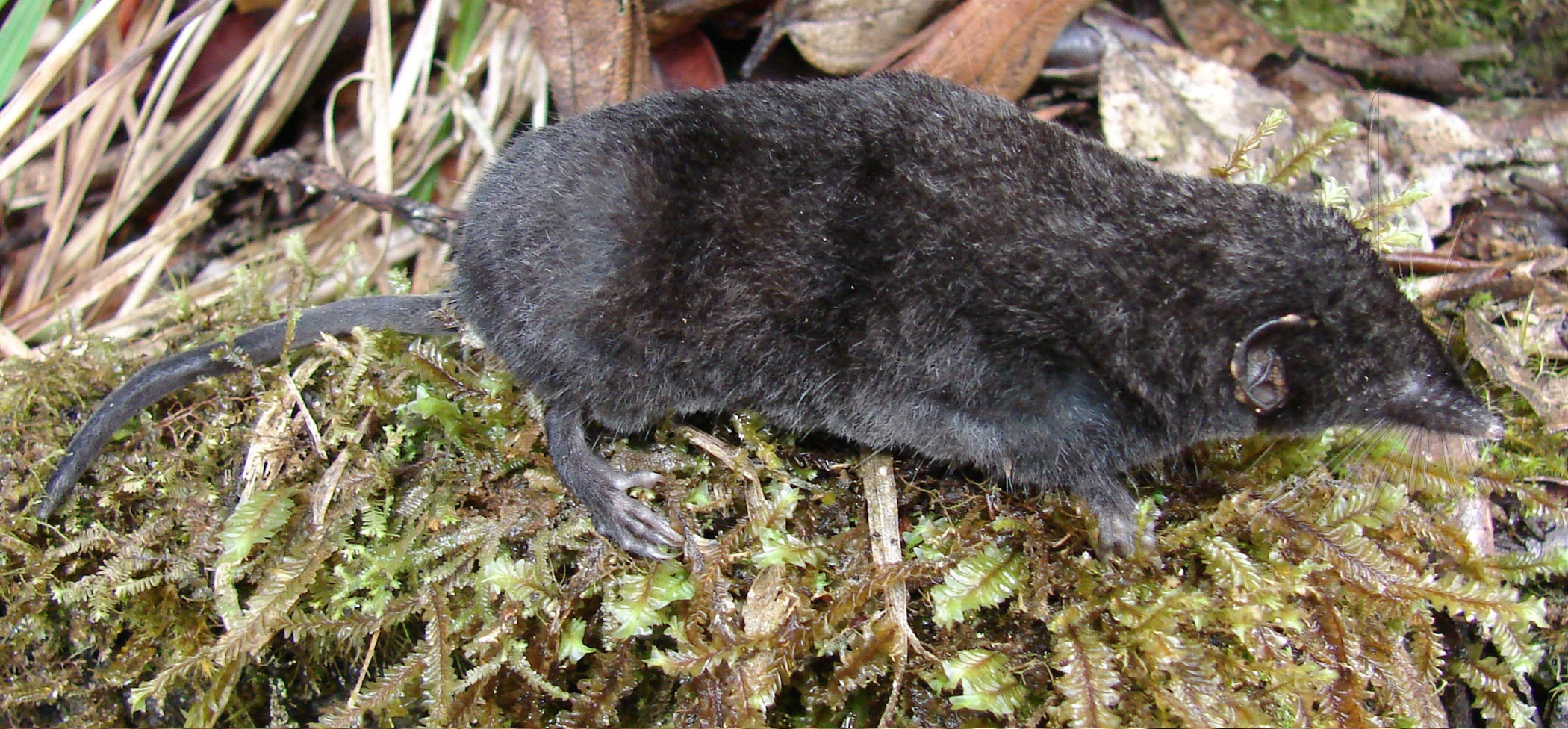Sky Island Moss Shrew Discovered
LSU Museum of Natural Science Curator discovers new mammal in the Philippines

The newly discovered Palawan moss shrew from the Philippines does not resemble any other type of shrew or have close relatives in Asia or elsewhere. Photo Credit: Danilo Balete
05/08/2018
BATON ROUGE – The Philippines teems with biodiversity: 657 bird species roam and fly
throughout the country’s 7,641 islands, and more than 2,000 fish species swim in the
surrounding seas. The Philippines is also home to the world’s greatest concentration
per square mile of unique mammal species. One of these species — a shrew found about
5,000 feet above sea level — may offer clues as to what makes the Philippines an ideal
environment for mammals.
The Palawan moss shrew, or Palawanosorex muscorum, is a small, slender mammal with a pointed snout and dark fur.
A team of researchers including LSU Museum of Natural Science Curator of Mammals Jacob
Esselstyn and collaborators at the Field Museum of Natural History in Chicago, the
Zoologische Forschungsmuseum Alexander Koenig in Bonn, Germany, and Siena College
in New York identified this new species. Their discovery was published in the Journal
of Mammalogy.
Unlike other shrews, the Palawan moss shrew’s tail is covered in dense fur rather
than visible scales. With broad forefeet and long claws, the Palawan moss shrew digs
through a low-density mountainous soil, or humus, in search of its favorite snack:
earthworms. The moss shrew does not resemble any other type of shrew or have close
relatives in Asia or elsewhere.
“This suggests that the newly discovered shrew may be a relic of a very different
shrew fauna that once occurred in East Asia,” Esselstyn said. “It provides some clues
about how small mammals have evolved and moved between Asia and Africa.”
Island systems, like the Philippines, are unique to study because they contain rich
biodiversity within a small space. The Philippines also has sky islands, or isolated
mountaintops with unique habitats that differ from the lowlands. The moss shrew was
discovered on one such sky island on Mt. Mantalingahan on Palawan Island in the Philippines.
Mt. Mantalingahan is habitat to three unique mammal species, including the shrew.
“There are entire countries that don’t have three unique mammal species — so for there
to be three species on one mountain, on one island, in one country is really something,”
said co-author Larry Heaney, Negaunee curator of mammals at the Field Museum of Natural
History.
The specimens arrived at the Field Museum of Natural History and initially were identified
as a new species of Crocidura, the only genus of shrew native to the Philippines.
“I examined the specimens shortly after they arrived at the Field Museum and quickly
realized they were not Crocidura. At the time, I knew they were something exciting,
but I didn’t know exactly where they fit into the classification of shrew diversity.
We collected some genetic data and found that they had no close relatives,” Esselstyn
said.
The moss shrew’s discovery may offer researchers important information about how these
creatures have evolved over time.
Esselstyn has also discovered several new mammals in Indonesia including the hog-nosed
rat, the Sulawesi water rat and the slender root rat.
Additional Links:
A new genus and species of shrew (Mammalia: Soricidae) from Palawan Island, Philippines, Journal of Mammalogy: https://academic.oup.com/jmammal/advance-article/doi/10.1093/jmammal/gyy041/4991977?searchresult=1
[VIDEO] Esselstyn Lab’s Biodiversity Research: https://vimeo.com/131050377
Contact Alison Satake
LSU Media Relations
225-578-3870
asatake@lsu.edu
Valerie Derouen
LSU Museum of Natural Science
225-578-2855
museum@lsu.edu
RECENT NEWS